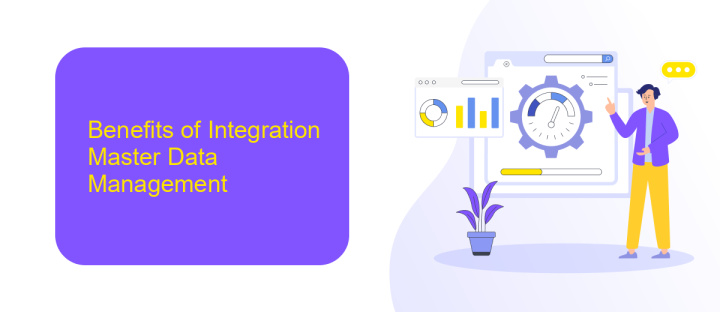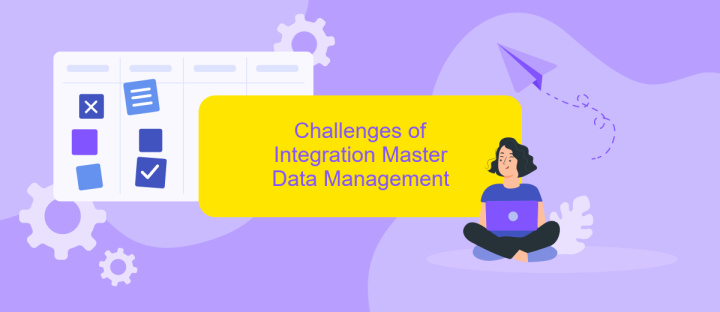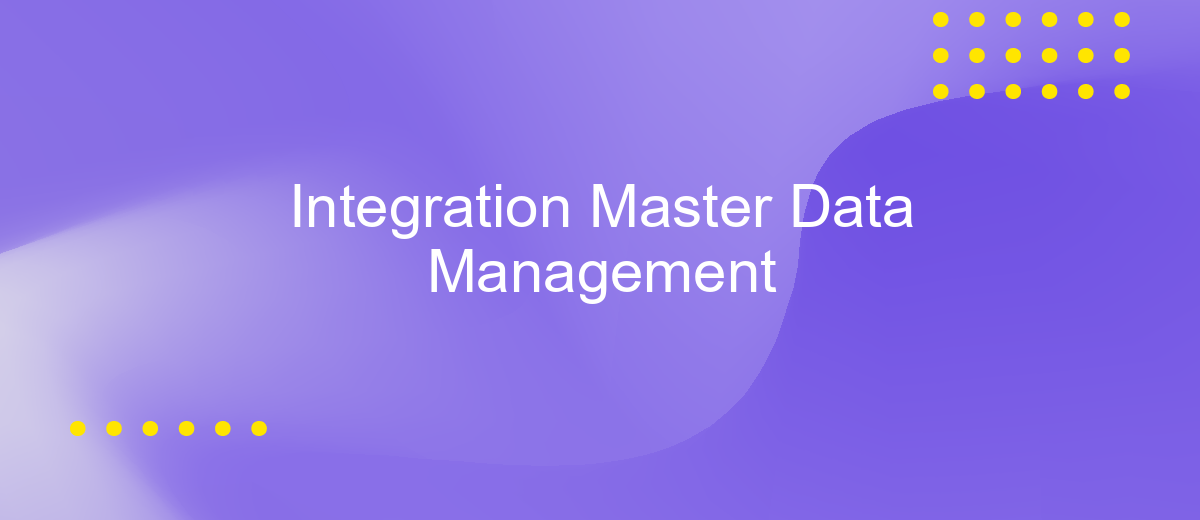Integration Master Data Management
Master Data Management (MDM) is a crucial discipline for ensuring the consistency and accuracy of an organization's critical data. Integration of MDM systems streamlines data from various sources, providing a unified view that enhances decision-making and operational efficiency. This article explores the key principles, benefits, and strategies for effectively integrating MDM to maximize data value and drive business success.
Overview
Integration Master Data Management (MDM) is a critical process in modern enterprises, aimed at ensuring the consistency, accuracy, and reliability of core business data across various systems and applications. By integrating MDM, organizations can achieve a unified view of their data, which is essential for informed decision-making and efficient operations.
- Ensures data consistency across multiple platforms
- Improves data accuracy and reliability
- Facilitates better decision-making
- Enhances operational efficiency
- Supports regulatory compliance
Implementing an effective Integration MDM strategy involves selecting appropriate tools, defining data governance policies, and continuously monitoring and refining data quality. Organizations that invest in robust MDM practices can expect to see significant improvements in their data management capabilities, leading to enhanced business performance and competitive advantage.
Benefits of Integration Master Data Management

Integration Master Data Management (MDM) offers numerous benefits that significantly enhance business operations. By consolidating and harmonizing data from various sources, it ensures data consistency and accuracy across the organization. This unified data view allows for better decision-making, as stakeholders have access to reliable and up-to-date information. Moreover, it reduces data redundancy and discrepancies, leading to increased operational efficiency and cost savings. Businesses can thus streamline their processes, improve customer experiences, and maintain regulatory compliance more effectively.
Additionally, integrating MDM with tools like ApiX-Drive can further optimize data management. ApiX-Drive simplifies the integration process by offering seamless connectivity between different applications and data sources. This not only accelerates the implementation of MDM solutions but also ensures continuous data synchronization. As a result, businesses can quickly adapt to changing market demands and leverage real-time data insights for strategic planning. Overall, the integration of MDM with robust services like ApiX-Drive empowers organizations to achieve a more agile and data-driven approach to their operations.
Challenges of Integration Master Data Management

Integration Master Data Management (MDM) is a critical aspect of modern business operations, but it comes with its own set of challenges. Organizations must navigate these hurdles to ensure seamless data integration and accuracy across various systems.
- Data Silos: Different departments often store data in isolated systems, making it difficult to integrate and manage master data effectively.
- Data Quality: Ensuring the accuracy and consistency of master data across multiple platforms can be a significant challenge.
- Scalability: As organizations grow, their data management systems must scale accordingly, which can be complex and resource-intensive.
- Compliance: Adhering to various regulatory requirements and data governance policies adds another layer of complexity to MDM integration.
- Technology Integration: Integrating new technologies with existing systems can be cumbersome and requires careful planning and execution.
Addressing these challenges requires a comprehensive strategy that includes robust data governance policies, advanced integration technologies, and continuous monitoring. By overcoming these obstacles, organizations can achieve a unified view of their master data, leading to better decision-making and operational efficiency.
Best Practices for Integration Master Data Management

Effective integration of Master Data Management (MDM) requires careful planning and execution to ensure data consistency and accuracy across systems. One of the first steps is to establish a clear governance framework that defines roles, responsibilities, and data standards. This helps to maintain data quality and streamlines the integration process.
Another crucial aspect is to leverage robust data integration tools that can handle complex data transformations and migrations. These tools should support real-time data synchronization to ensure that all systems are up-to-date with the latest information. Additionally, implementing data validation rules can prevent errors and inconsistencies during the integration process.
- Define a clear governance framework
- Utilize robust data integration tools
- Implement real-time data synchronization
- Apply data validation rules
- Monitor and audit data integration processes
Finally, continuous monitoring and auditing of data integration processes are essential to identify and resolve issues promptly. Regularly reviewing and updating your MDM strategy ensures that it evolves with your organization's needs and technological advancements. By following these best practices, organizations can achieve seamless and reliable MDM integration.


Conclusion
In conclusion, the integration of Master Data Management (MDM) is a critical component for ensuring the consistency, accuracy, and reliability of data across various systems within an organization. By centralizing and harmonizing master data, businesses can achieve a unified view of their data assets, leading to more informed decision-making and enhanced operational efficiency. The implementation of MDM not only mitigates data silos but also fosters a collaborative environment where data is treated as a shared asset.
Moreover, leveraging tools like ApiX-Drive can significantly streamline the integration process. ApiX-Drive offers a user-friendly platform that allows seamless connection and automation between different applications and systems. This reduces the complexity and time required for integration tasks, enabling organizations to focus on their core activities while ensuring their data remains synchronized and up-to-date. As businesses continue to evolve in the digital age, the importance of robust MDM and efficient integration solutions cannot be overstated.
FAQ
What is Master Data Management (MDM)?
Why is Integration important in MDM?
How can I automate the integration of my data sources for MDM?
What challenges might I face when integrating data for MDM?
Can I integrate cloud-based and on-premises systems for MDM?
Time is the most valuable resource for business today. Almost half of it is wasted on routine tasks. Your employees are constantly forced to perform monotonous tasks that are difficult to classify as important and specialized. You can leave everything as it is by hiring additional employees, or you can automate most of the business processes using the ApiX-Drive online connector to get rid of unnecessary time and money expenses once and for all. The choice is yours!

